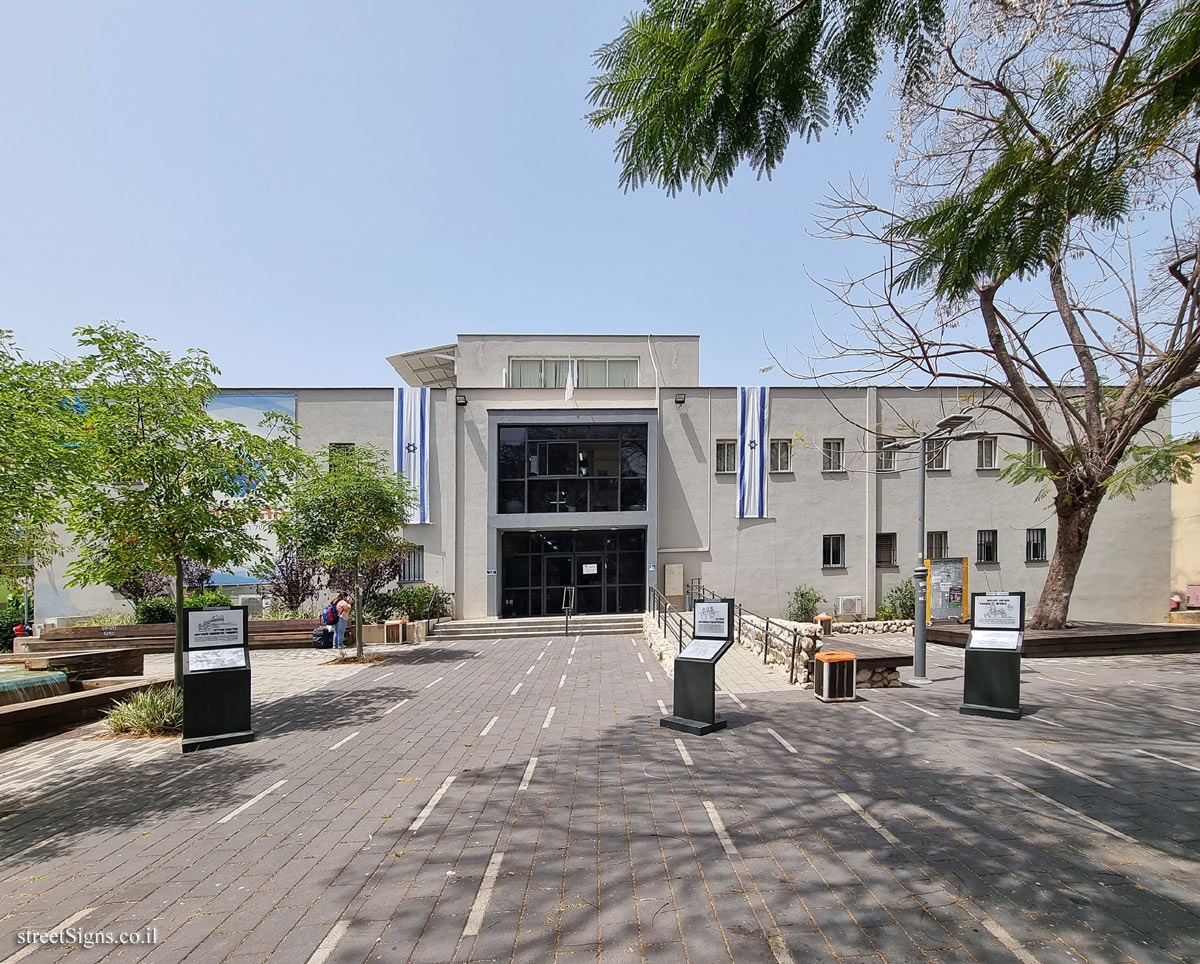One of the stations in the Histadrut Garden in Rishon Lezion, inaugurated in July 2020, with signs marking milestones in the history of the Histadrut.
The illustrations at the trail stations were made by Nofar Tzarfati.
A broad view of some of the stations was taken that day by the same photographer
 Click for a larger image
Click for a larger image Three months later, it was inaugurated in Tel Aviv next to the Histadrut building, the Histadrut Garden, with the Youth Movements Trail, which contains the same signs with the same text and illustrations (but the signs are made of stone and are on the ground)
 Click for sign's details Translation of the text on the sign
Click for sign's details Translation of the text on the sign:
Station number: 7
Symbol of the Histadrut - the home of workers in Israel
Absorption of immigrants in the first decade of the state With the establishment of the state, mass immigration to Israel began and within a few years the population of Israel doubled. The Histadrut, which took responsibility for preparing the infrastructure for the absorption of immigrants, set up systems of social services.
During the first decade of the state, with the background of the war of independence and a difficult economic situation, the Histadrut established through Solel Boneh, more than 150,000 housing units, most of which were intended for immigrants and paved roads in the frontier and development areas. At the same time, the Histadrut established, through the corporation Koor, industrial plants, while creating new sources of employment for thousands of immigrants such as Alliance, Telrad, Soltam and more.
Learn about:


 Click for a larger image
Click for a larger image  Click for sign's details
Click for sign's details